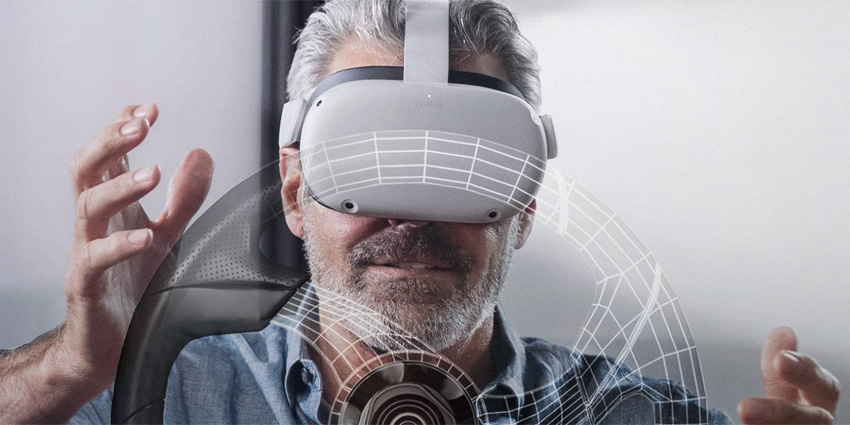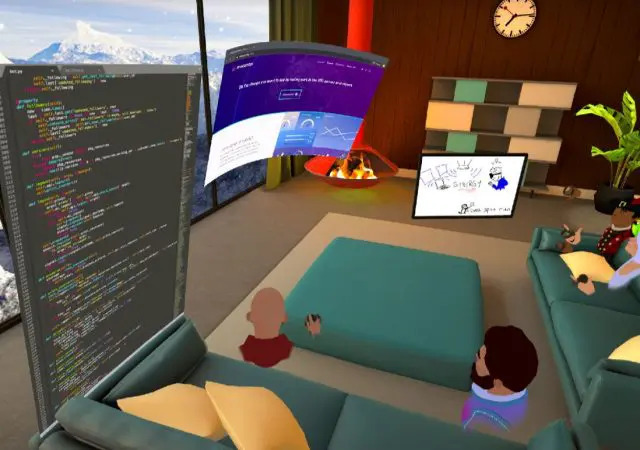Protecting your enterprise VR headset investment and increasing user adoption
With PwC recently reporting that virtual reality could add $1.5 trillion to the global economy by 2030, it’s clear the technology will play an essential role in the future of business.
While VR may have started its journey as a commodity in the consumer space, the number of organizations now adopting VR headsets and platforms to improve everything from training and collaboration to marketing and customer experience is more significant than ever before.
Virtual reality, along with mixed and augmented reality technologies, are already transforming many industries across the board, including healthcare and the AEC to manufacturing, design, and hospitality – but how exactly do you successfully implement VR into your business in 2021?
Let’s look below.
Start Your Enterprise VR Journey
To successfully introduce VR headsets into an organisation, the official Oculus for Business guide recommends all businesses begin first by building a dedicated VR implementation team.
According to Oculus for Business, with the right VR launch team in place, the organization can easily monitor, manage, improve, and maintain their VR strategy to drive success from day one.
To build a VR implementation team, Oculus for Business recommends following a simple six-step hiring process.
Get the ball rolling with a Project Manager
They say those who fail to plan, plan to fail, which is why hiring a dedicated Project Manager to keep track of the VR implementation process is essential. This person will create a schedule for the rest of the team, ensuring they have enough time to test, trial, and implement the VR hardware/software into the organization successfully. They’ll also manage the budget and keep the team on track to make sure they meet set goals.
Strengthen strategical thinking with a Business Champion
Whether it’s for training, collaboration, data visualization, design, or remote-work support, the Business Champion will decide how the organization uses the VR technology to ensure the best ROI. They will also determine who uses VR and decide how best to measure its value within the business. Once they have gathered these metrics, they can determine which VR products and vendors align best with the business’s goals.
Engage executive support with an Executive Sponsor
Depending on the type of organization and the VR Implementation project’s size, hiring an Executive Sponsor is an important step to ensure communications between the VR team and key executive figures remain transparent and reciprocal. The Executive Sponsor will ensure CEOs and other organizational decision-makers receive all the information they need to continue investing in the project. They’ll also make sure all feedback, concerns, and suggestions are filtered down from the top.
Hire a Development Partner to Build First VR Application
While larger organizations may have in-house developers, start-ups may want to consider bringing in third-party VR Development Partners to create their first application. By leveraging all the business’s goals and requirements, the Development Partner can build, launch, manage and and test the app on relevant users and target audiences.
Keep the backend tidy with an IT Lead
Like the glue keeping everything together, the IT Lead will be responsible for ensuring all VR technologies are active, updated, and ready for launch. They will need to set up all devices and authenticate accounts for all users within the organization, ensuring things run smoothly without a hitch.
Carry out a soft launch and monitor the results
Next, once all of aforementioned steps are completed, Oculus for Business recommends soft-launching the VR project and measuring outcomes against set KPIs. During this soft launch, both the Project Manager and the Business Champion should perform in-depth data analysis to determine the ROI and any additional use cases for the organization’s VR tech.
Final steps looking forward
While most people are happy to try exciting new technologies like VR, it can present problems for some users – especially if they’re uncertain about what VR is and how it benefits them personally.
Therefore, to increase user adoption rates and ensure a better ROI, businesses must provide adequate training demonstrations for first-time VR headset users. They must also explain their reasons for investing in VR headsets, focusing specifically on how the tech will improve each user’s productivity, performance, and personal success.
Quelle:




